A methodology based on understanding and respect
Since we have introduced the horses to the world of people, we must follow a few steps so they learn what we want from them in an enjoyable way within a trusting and respectful relationship.
Based upon the basic family intuition, sensitivity and passion for horses, the Horseway Methodology goes a step further, including more technical expertise within a well-defined structure that guides both human and horse development.
This idea made a respectful way to work with the horse, is based on three fundamental pillars:
Natural horsemanship – Connected Riding™ – Connection through breathing.
The values of our methodology and the ideals that we seek, in relation to the horses, are communication, fairness, and leadership from understanding, helping us internalize attitudes that positively affect our lives and our social and family relationships.
Equine Education (through natural horsemanship)
Natural horsemanship (or natural handling) of the horse requires an understanding of the horse’s nature.
Natural horsemanship is based on equine ethology, the scientific study of horse behavior in the wild. We need to know how the horse thinks and acts in its natural habitat to understand it and communicate with it effectively.
With this knowledge, experience and a great deal of sensitivity, we can establish a relationship with horses based on trust, respect, communication and cooperation.
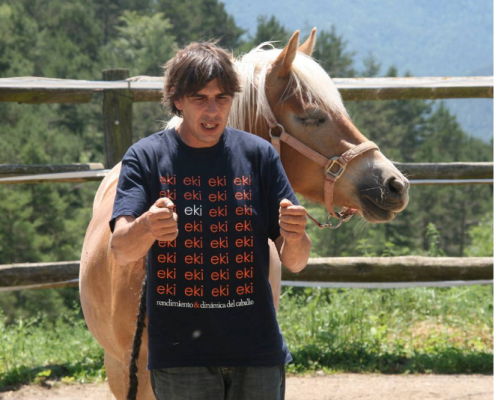
Connected Riding™
Connected riding™ is a method created by Peggy Cummings permits us to communicate better, to have a better relationship with our horse. We learn to connect both through awareness of our own body and position and then by knowing how to listen to the body of the horse.
Connected Riding™ teaches how it is possible to ride the horse, to be synchronized with the horse’s movement, based upon knowledge of both our own and the horse’s biomechanics.
The Connected Riding™ method is based upon two pillars:
- Teaching the rider body and movement awareness; teaching the best position to ride the horse, and teaching how to move in harmony with the horse.
- Teaching the horse to develop postural, muscular, and movement patterns, to gain balance, and to support, without pain nor tension, the weight of the rider.
We often hear that a horse doesn’t want to listen, or that it is hesitant or stubborn, but these attitudes are not the horse’s intention. Even if we take care of our horses and show them affection, we can still create tension and stress in the horses if we are tense and stressed. The result is a rigid ride, lacking elasticity and balance in both horse and rider. The horse, who cannot talk, responds by refusing its cooperation.
All Connected riding classes and courses are thaught by Melín M. Farriols, equine educator and oficially the only practitioner of Connected Riding™ in Spain.
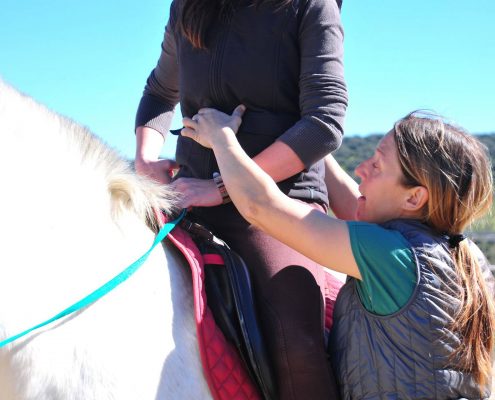
Connection through breathing
This technique strengthens our connection with the horse, and makes both natural taming and Connected Riding™ more effective. It helps our self-control and to energy regulation
Jenny Rolfe, has deepened the work on how to transform our communication with horses with breathing techniques, and how to utilize them to regulate our energy and improve our connection with the horse.
Learning the power of controlled-breathing techniques helps us gain intention, control, tranquility, freedom and movement. We gain a deeper connection with the horse from the breathing energy-center.
The connection through breathing is like a wave in the sea. You can increase or relax the energy in your center, your seat, and your connection with the horse. Conscious breathing conveys a clear intention of what you want to transmit.
Focusing on our breathing helps us improve our position and balance while allowing movement to flow through our body.
In this way, you will experience true harmony, achieving the most subtle and sensitive responses from the horse.
Breathing is a potent tool that creates harmony between horse and rider.
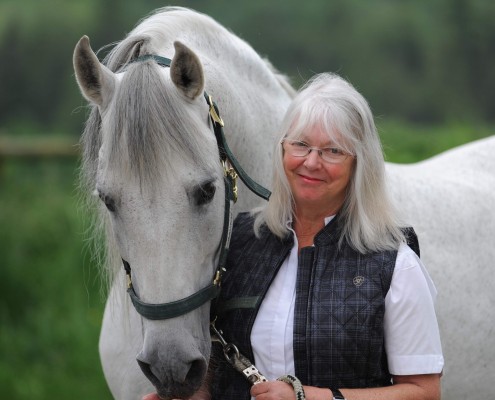
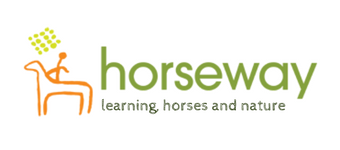
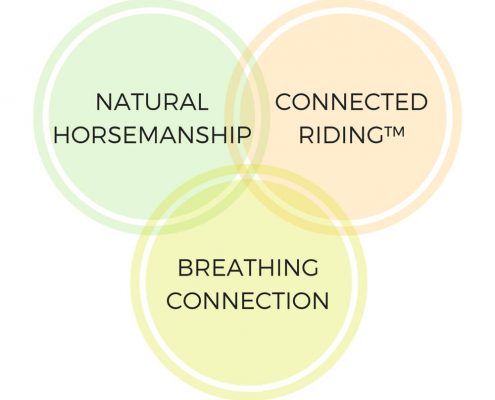 Based upon the basic family intuition, sensitivity and passion for horses, the Horseway Methodology goes a step further, including more technical expertise within a well-defined structure that guides both human and horse development.
Based upon the basic family intuition, sensitivity and passion for horses, the Horseway Methodology goes a step further, including more technical expertise within a well-defined structure that guides both human and horse development.